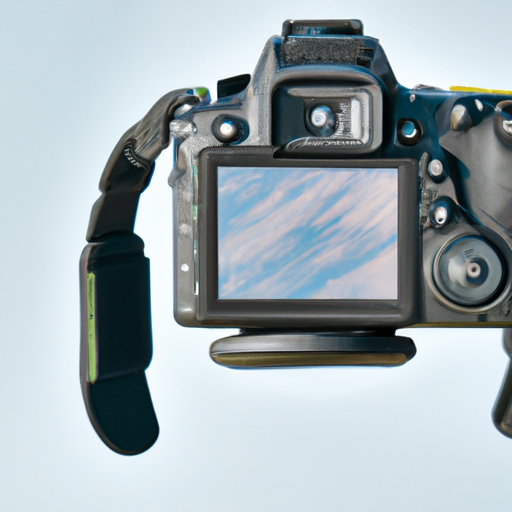Table of Contents
- Introduction
- How to Choose the Right Camera for Professional Photography
- Tips for Setting Up the Perfect Lighting for Professional Photos
- Understanding the Basics of Aperture and Shutter Speed for Professional Photography
- How to Use Props and Backgrounds to Enhance Professional Photos
- Editing Techniques to Make Professional Photos Pop
- Conclusion
«Capture the Moment – Professional Photos with Your Camera!»
Introduction
Taking professional photos with a camera can be a daunting task, especially if you are new to photography. However, with the right knowledge and practice, you can create stunning photos that will impress your friends and family. In this guide, we will discuss the basics of taking professional photos with a camera, including the different types of cameras, the importance of lighting, composition, and other tips and tricks. With the right knowledge and practice, you can create beautiful photos that will capture the moment and make it last forever.
How to Choose the Right Camera for Professional Photography
Choosing the right camera for professional photography can be a daunting task. With so many options available, it can be difficult to know which camera is best for your needs. Here are some tips to help you make the right choice.
First, consider the type of photography you will be doing. Different cameras are designed for different types of photography, so it’s important to choose a camera that is suited to your specific needs. For example, if you plan to do a lot of landscape photography, you’ll want to look for a camera with a wide angle lens and a large sensor. If you plan to do a lot of portrait photography, you’ll want to look for a camera with a longer lens and a higher resolution.
Second, consider the features you need. Different cameras offer different features, so it’s important to choose a camera that has the features you need. For example, if you plan to do a lot of low-light photography, you’ll want to look for a camera with a high ISO range. If you plan to do a lot of action photography, you’ll want to look for a camera with a fast shutter speed.
Finally, consider your budget. Different cameras come with different price tags, so it’s important to choose a camera that fits within your budget. If you’re on a tight budget, you may want to look for a used camera or a camera with fewer features.
By considering the type of photography you’ll be doing, the features you need, and your budget, you can make an informed decision about which camera is right for you. With the right camera, you can take your professional photography to the next level.
Tips for Setting Up the Perfect Lighting for Professional Photos
1. Choose the Right Light Source: Natural light is often the best choice for professional photos, as it is soft and diffused. However, if you are shooting indoors, you may need to use artificial light sources such as studio lights or strobes.
2. Use Soft Light: Soft light is more flattering than harsh light, so try to use soft light sources such as umbrellas or softboxes. This will help to create a more even light and reduce harsh shadows.
3. Use Multiple Lights: Using multiple lights will help to create a more balanced and even light. You can use a combination of natural and artificial light sources to achieve the desired effect.
4. Use Reflectors: Reflectors are a great way to bounce light back onto your subject and fill in any shadows. You can use white, silver, or gold reflectors depending on the look you are trying to achieve.
5. Experiment with Angles: Experimenting with different angles and positions of your lights can help to create interesting and unique lighting effects. Try moving the lights around and see what works best for your particular setup.
6. Use a Light Meter: A light meter can help you to measure the intensity of the light and ensure that you are getting the right amount of light for your photos.
7. Use a Tripod: A tripod will help to keep your camera steady and ensure that your photos are sharp and clear.
8. Use a Remote Trigger: A remote trigger will allow you to take photos without having to touch the camera, which can help to reduce camera shake and blur.
Following these tips will help you to create the perfect lighting for professional photos. With a bit of experimentation and practice, you will be able to create stunning images that will impress your clients.
Understanding the Basics of Aperture and Shutter Speed for Professional Photography

Aperture and shutter speed are two of the most important elements of professional photography. Understanding how they work together is essential for creating stunning images.
Aperture is the size of the opening in the lens that allows light to pass through. It is measured in f-stops, with larger numbers representing a smaller opening and smaller numbers representing a larger opening. Aperture affects the depth of field in an image, which is the area of the image that appears in focus. A larger aperture (smaller f-stop number) will create a shallow depth of field, while a smaller aperture (larger f-stop number) will create a deeper depth of field.
Shutter speed is the amount of time that the shutter is open, allowing light to reach the camera’s sensor. It is measured in fractions of a second, with larger numbers representing a longer exposure and smaller numbers representing a shorter exposure. Shutter speed affects the amount of motion blur in an image, with a longer exposure creating more blur and a shorter exposure creating less blur.
When setting the aperture and shutter speed for a photograph, it is important to consider the desired effect. For example, if you want to create a shallow depth of field, you should use a larger aperture (smaller f-stop number). If you want to freeze motion, you should use a shorter shutter speed (larger fraction of a second).
By understanding the basics of aperture and shutter speed, you can create stunning images with professional-level results. With practice and experimentation, you can master the art of controlling light and creating beautiful photographs.
How to Use Props and Backgrounds to Enhance Professional Photos
Using props and backgrounds can be a great way to enhance professional photos and create a unique look. Props and backgrounds can be used to add interest, create a mood, and draw attention to the subject of the photo. Here are some tips for using props and backgrounds to enhance professional photos.
1. Choose props and backgrounds that complement the subject. When selecting props and backgrounds, consider the colors, textures, and shapes that will best complement the subject of the photo. For example, if the subject is wearing a bright red dress, choose props and backgrounds that will bring out the color of the dress.
2. Use props to add interest. Props can be used to add interest to a photo and draw attention to the subject. Consider using props that are related to the subject, such as a book or a musical instrument.
3. Use backgrounds to create a mood. Backgrounds can be used to create a certain mood or atmosphere in a photo. Consider using a background that will help to set the tone of the photo, such as a beach or a forest.
4. Use lighting to enhance the photo. Lighting can be used to enhance the colors and textures of the props and backgrounds. Consider using natural light or artificial light to create the desired effect.
By following these tips, you can use props and backgrounds to enhance professional photos and create a unique look. With the right props and backgrounds, you can create a stunning photo that will stand out from the rest.
Editing Techniques to Make Professional Photos Pop
Professional photos can be used to capture special moments, create marketing materials, or simply to document a scene. To make these photos stand out, there are several editing techniques that can be used.
First, adjusting the exposure can help to bring out the details in a photo. Increasing the exposure can make the colors brighter and more vibrant, while decreasing the exposure can create a more subtle, muted look.
Second, adjusting the contrast can help to make the colors in a photo stand out. Increasing the contrast can make the colors more vivid, while decreasing the contrast can create a softer, more subtle look.
Third, adjusting the white balance can help to make the colors in a photo look more natural. Increasing the white balance can make the colors look warmer, while decreasing the white balance can make the colors look cooler.
Fourth, adjusting the saturation can help to make the colors in a photo look more vibrant. Increasing the saturation can make the colors look more vivid, while decreasing the saturation can create a more muted look.
Finally, adjusting the sharpness can help to make the details in a photo stand out. Increasing the sharpness can make the details look more crisp, while decreasing the sharpness can create a softer, more subtle look.
By using these editing techniques, professional photos can be made to pop and stand out. With a few simple adjustments, a photo can be transformed from ordinary to extraordinary.
Conclusion
Taking professional photos with a camera requires a combination of technical knowledge, creative vision, and practice. It is important to understand the basics of photography, such as composition, lighting, and exposure, as well as the features of your camera. Additionally, it is important to practice and experiment with different techniques to find the style that works best for you. With the right knowledge and practice, you can take professional photos with your camera.

































